Today was a day to simply wander a bit in a park we hadn’t explored before, so we headed to the Volksgarten (“People’s Garden”), which is the public park located beside the Hofburg Palace. Its location was originally city fortifications, but when those were destroyed by Napoleon in 1809, it left an empty space which was originally going to become a private garden for the Habsburg Archdukes. Instead, a successful proposal was made for the first public park in Vienna, which opened in 1823.
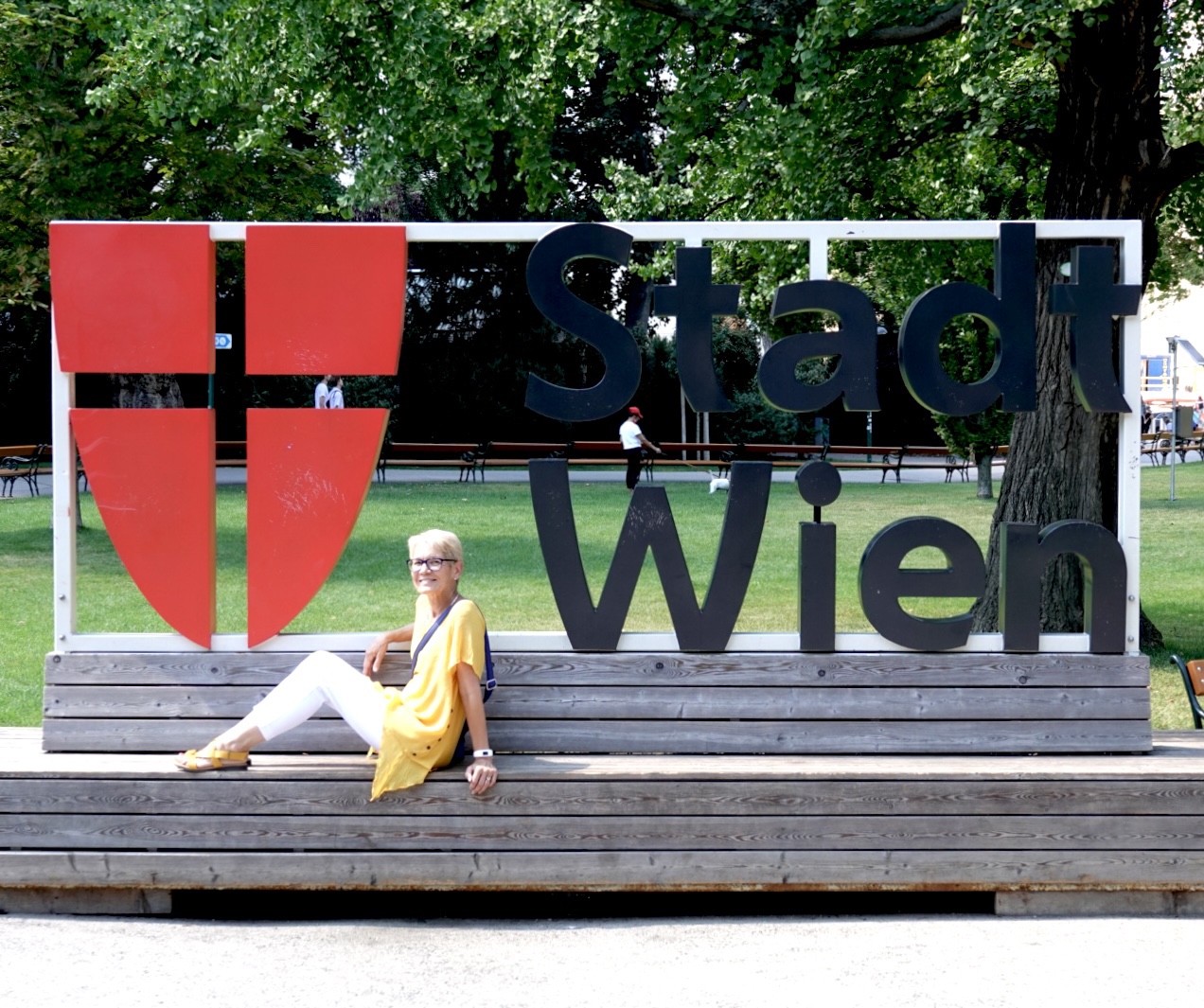
The gardens were expanded to their current size in 1862 after the city moat had been filled in. Wait. What? Vienna’s inner city had a MOAT? There really is so much to learn.
Anyway… the current park has wide paths, lots of benches and chairs, and ROSES! There are over 3,000 rose bushes representing around 400 different varieties. Virtually all of the rose bushes are sponsored by individuals and thus bear signs celebrating anniversaries, birthdays, friendships, young and old loves, and occasionally a memorial dedication.

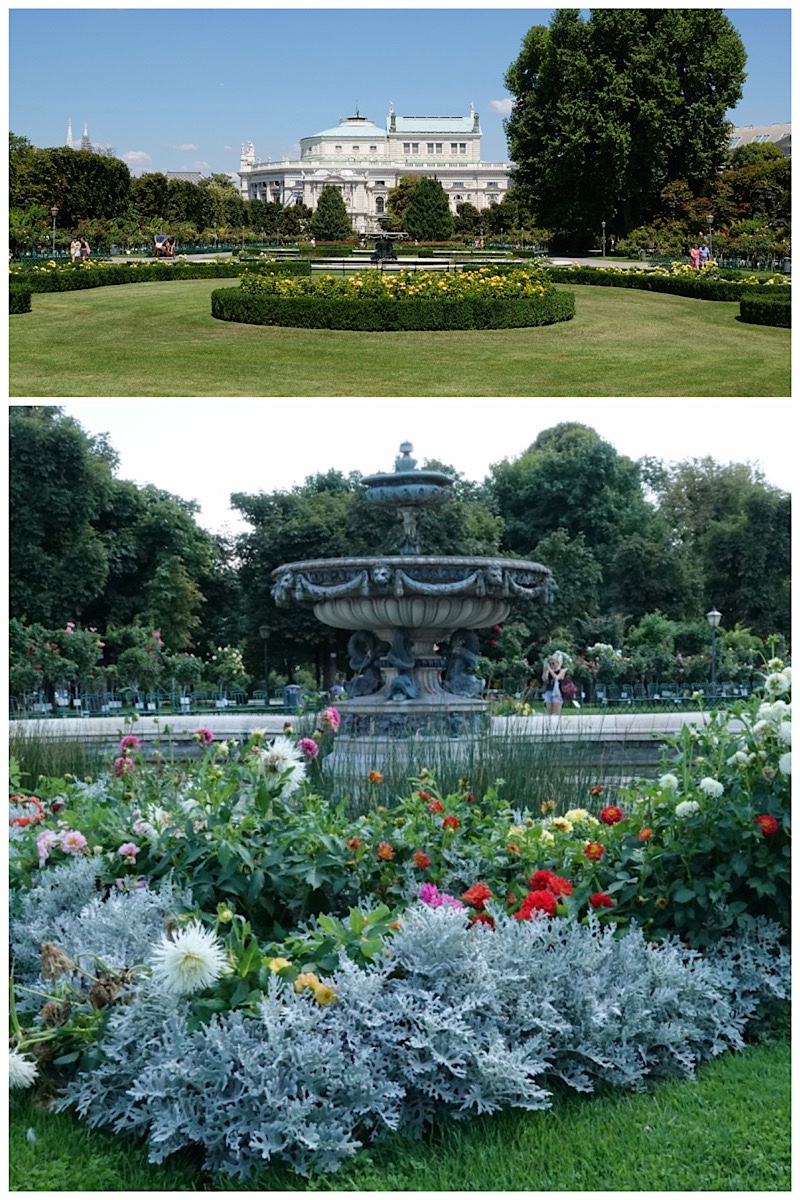
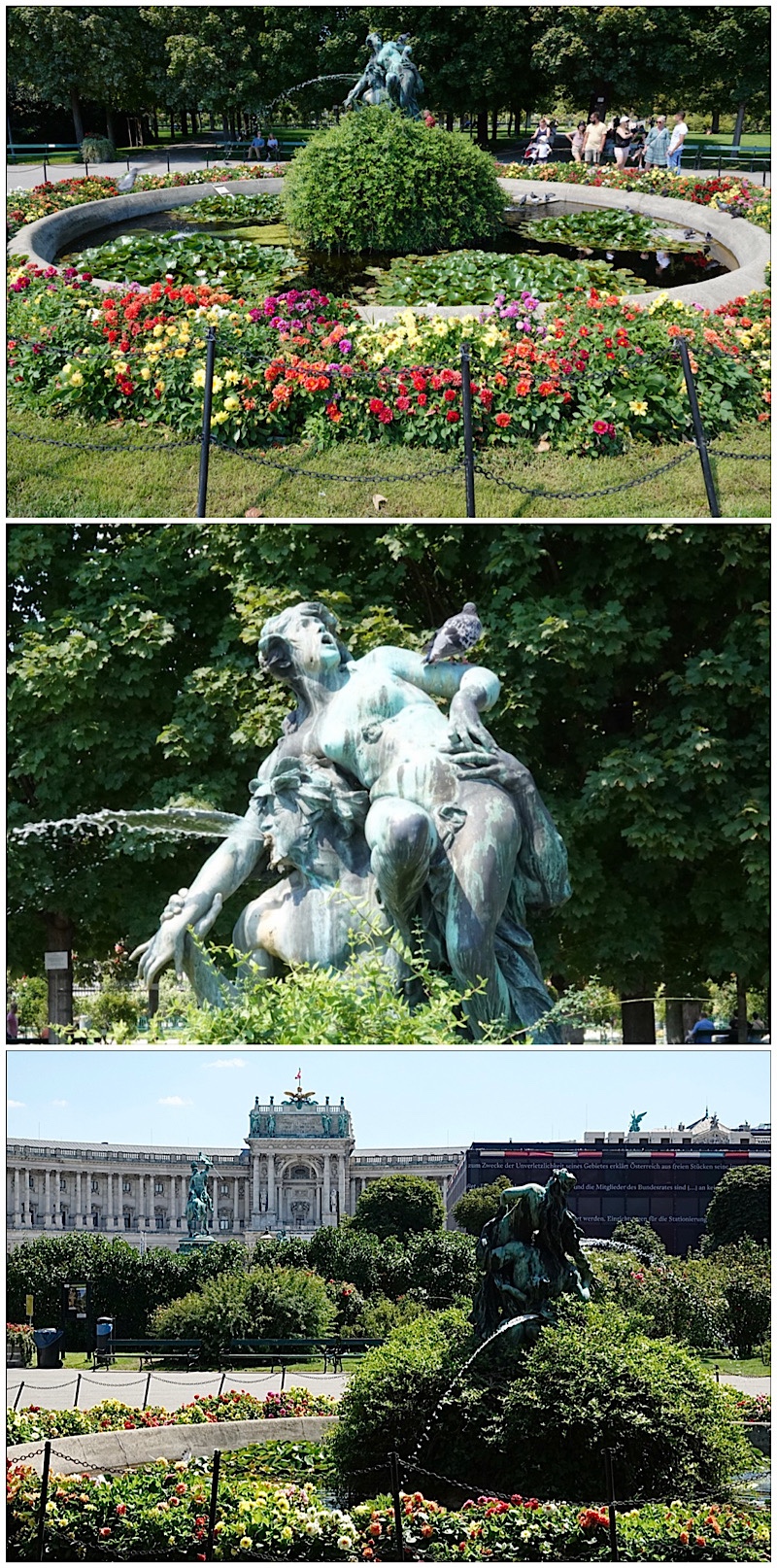
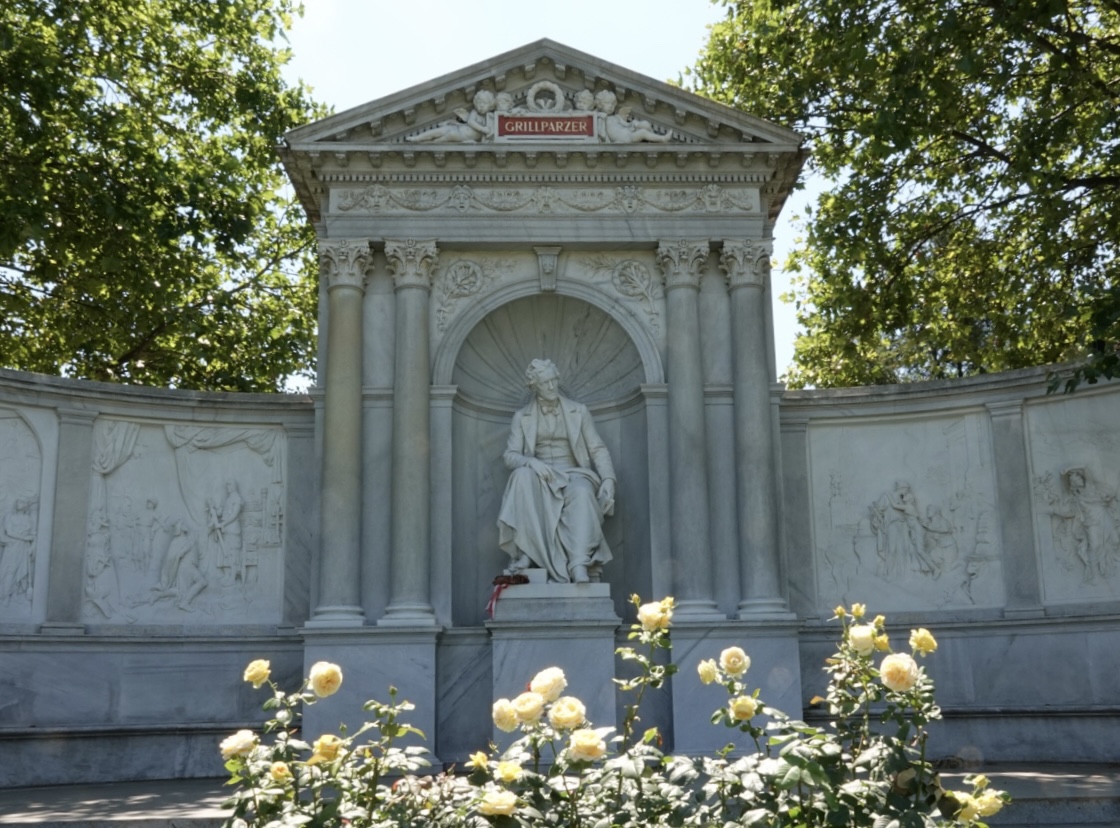
In the centre of the park is the Theseus Temple (1821), which is a small scale copy of the Temple of Hephaestus in Athens.
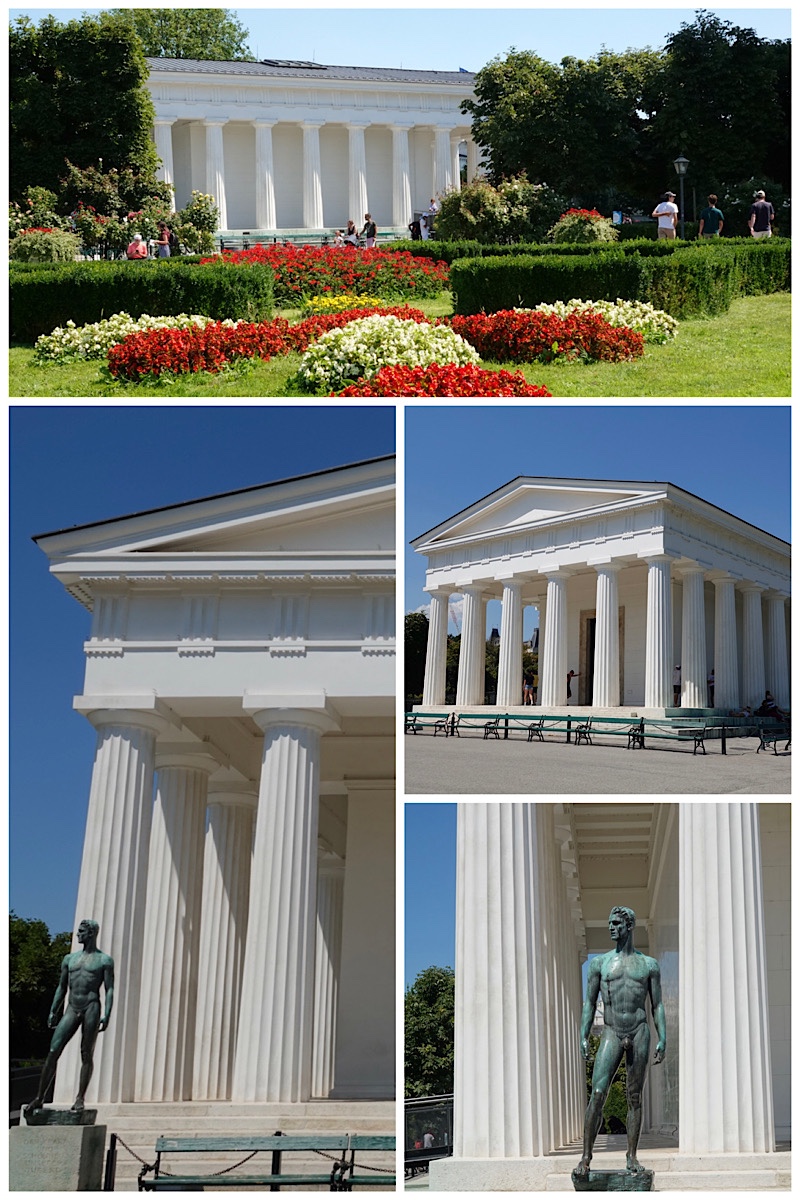
This is where the park got really interesting, especially for science fiction aficionados like we both are. Imagine what the world might look like in 100 years: the polar ice caps have melted, and all humankind’s poor choices have had their (un)natural consequences. What do you see?
George Nuku, a Māori artist, sees “Bottled Ocean 2122”, the art installation currently in the Theseus Temple – a temple which could well be underwater in 2122 if things continue as they are.
I’ve copied the installation’s description word for word here, and beyond that Ted’s pictures pretty much tell the story.
Bottled Ocean 2122
The world is undergoing a process of chemical mutation: the over-exploitation of fossil fuels fosters global warming and climate change, and plastic now permeates all life on earth. Every grain of sand on every beach on earth contains plastic in its molecular structure, as does human blood.
Accelerated dependence on plastic packaging has created new mountains on land and new atolls and islands in the oceans – made of discarded plastic bottles. As overuse of plastic grows, the supply and availability of suitable drinking water wanes. Plastic bottles have become a vital fact of life for humans in the twenty-first century: they contain and supply drinking water.
Morphing into various cultural norms, the plastic bottle is becoming a totem of modern life, forged into our new cities, our new cathedrals, our new temples, our new ancestors. The ultimate result is environmental collapse and catastrophe. When the polar caps have finally melted, the entire world will be covered in saltwater. In this new world, only those who adapt will survive.
This scenario is set a century from now: a submarine temple with walls lined with the Māori divinities of nature. Marine life is transformed into plastic-mutated species. Marine encrustations and anemones are formed by colourful plastic bottle caps. The chant of the great ninth-century Polynesian voyager Ru calls to Tangaroa, divinity of the Ocean:
Tangaroa i te titi-Tangaroa i te tata.
Tangaroa of the near shore
Tangaroa of the distant horizon
Tangaroa of the upper levels of the ocean
Tangaroa of the bottomless depths.
I have named the micro plastic particles permeating the ocean for Tangaroa. They are now his children. Through my Māori heritage, I seek to re-configure our relationship with the environment. Ultimately, like everything in our world, pollution itself is sacred. Plastic bottles, connoting light and water, the source of life itself, are a treasure and proof of divinity. It is not too late to change our relationship with the environment and move closer to the plastic that permeates every aspect of our lives now. The feelings generated by being in this room result from the care and attention invested by all of us who have worked together to create this. It represents the antidote to neglect. Taking care with both hands, we all become caretakers.
George Nuku, 2023
I found Nuku’s work fascinating, beautiful (it reminded me of a Chihuly glass exhibition), and totally scary all at the same time. What a hidden gem.
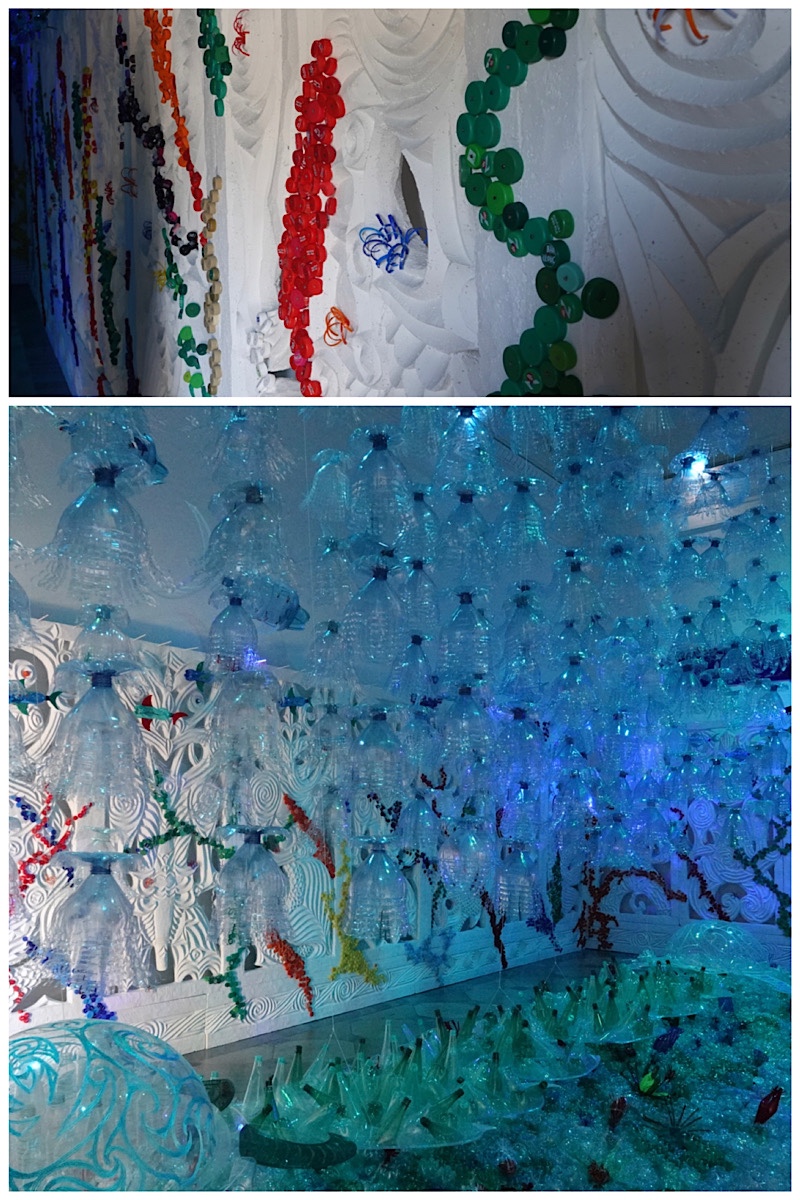
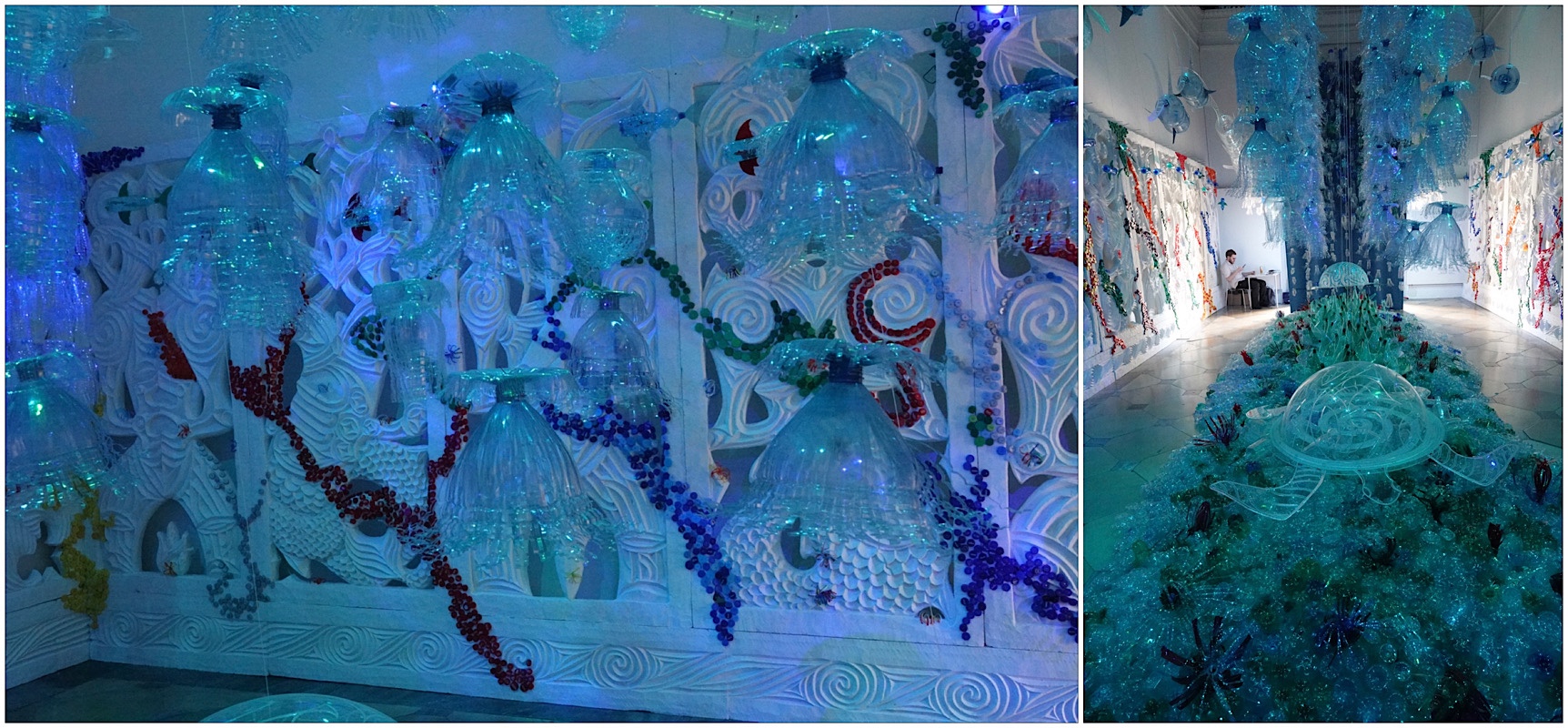
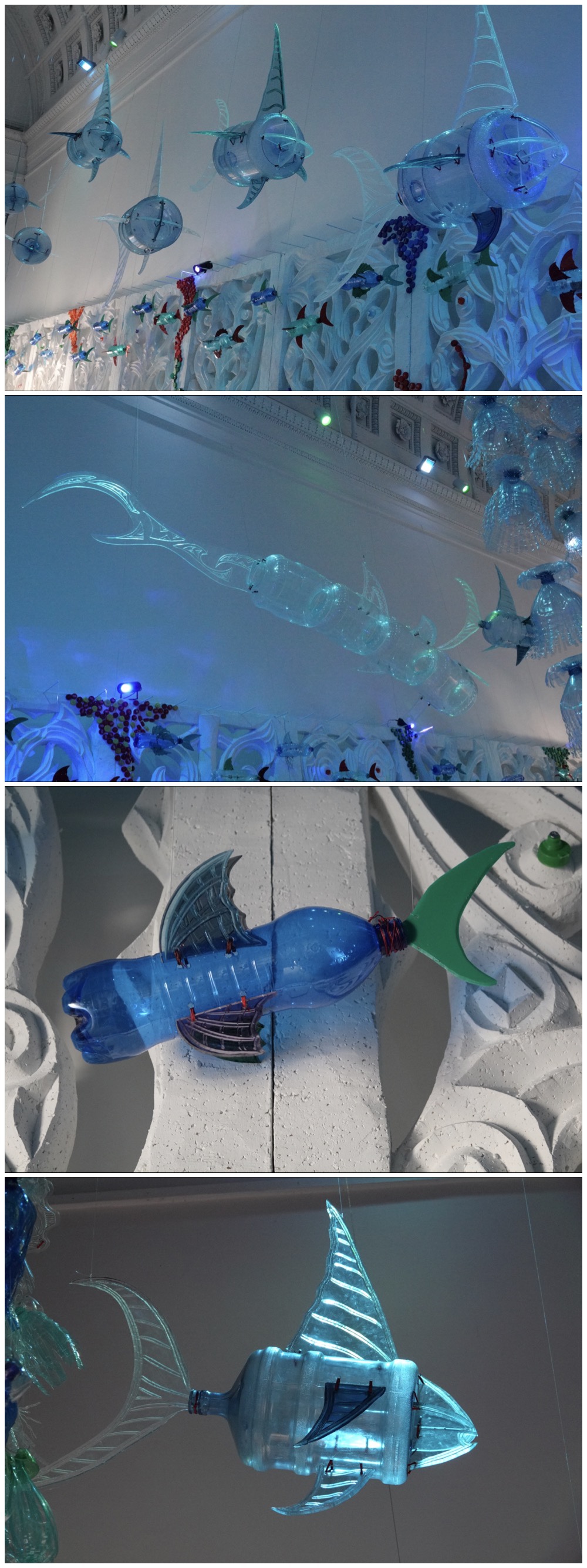
Today cost us virtually nothing – the kind of day we need to have every so often in order to stay within our budget. We used our €15 weekly transit passes, and the park and art installation were free; we just had to pay for our cold Ottakringer beers after walking around in 32°C/90°F sunshine for a couple of hours.
Back to the Innere Stadt (inner city around the Hofburg) again tomorrow to tour the Natural History Museum before going out for dinner with the owner of our apartment. It promises to be a taste of local life in Vienna that we wouldn’t find on our own.
I’ll be interested to hear your plans for your November return to Vienna on the Viking GE — if only for a day or two. What you’ll plan to see will be the very distillation of Vienna, I imagine. I spent a university year there in 1976-77 — even voted for the first time on an absentee ballot (for Carter!) but am returning to a vastly changed city in some ways. There was no subway… I recall deliberately limiting myself to a pastry a week for budget and weight control reasons. I ate a lot of the pink wrapper Mannerschnitten with my coffees though. I am very disappointed that the remarkable exhibit by George Nuku closes just a few days before we reach Vienna on our October trip! It’s really incredible and I appreciate all the pictures very much.
LikeLiked by 1 person
I have followed your blog since your world cruise (DH and I were on 2018-19 Viking WC). Always so interesting and insightful. You have inspired us – we’re talking seriously about spending a significant amount of time in some of our destinations . A question – how do you find your accomodations?
Thanks for letting us travel along with you!
LikeLike
Love having you along for the ride! We generally use VRBO (formerly HomeAway). Have tried AirBNB a couple of times, but found their cancellation policy unsuitable (for us) for planning month-long stays months in advance. Sadly, we’ve reached an age where life events can be unpredictable, and while we want to plan often 12 months in advance, we also want to be able to make changes if needed without huge penalties. That said, most folks that travel the way we do seem to be huge AirBNB fans.
LikeLike
Whoa… no cake?????? LOL!
But your correlation to Chihuly in the plastics sculptures is right on, Rose. It would have been rather fascinating. Another fun day.
LikeLiked by 1 person
Woman cannot live by cake alone. There must also be beer…..
LikeLike
Hi Rose and Ted,
Always fun to read your comments to places we know and have visited too. We have been in Denmark for the past 7 weeks and will stay for another month, hoping we are not exceeding our limit of 90 days in the Schengen area. Hopefully you will stay out of trouble too – as we know from experience the immigration officers can be pretty tough. Where are you going next and how long do you expect to stay in Europe before going home to Canada? We have been very busy seeing friends and family and we have so far hosted a couple from Chicago that we met on the World cruise in 2019. Sunday, we look forward to welcoming Dan to our Danish summer house in Hornbæk. We met him also in 2019, and he joined us on 2021/22 (tall, single guy who found a companion in Sara Borr).
Best Regards, Marianne & Neil Werner
LikeLike
Glad to hear all went smoothly and you’re enjoying Denmark. We head to Trieste mid-month and then out of the Schengen to England. Back to Canada for October, returning to Europe for a Viking cruise from Brussels to Prague in November. Schengen dates all double-checked!! Mexico for 5 months and after that still undecided, but there will undoubtedly be more Europe in our futures! So glad to be staying in touch!!
LikeLike